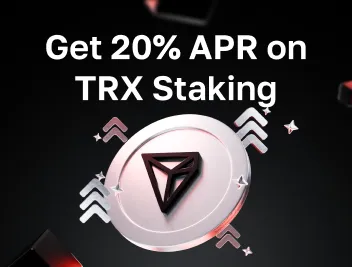
Mantra Falls 88% in a Day: What’s Behind the Insider Sell-Off?
On April 13, the cryptocurrency market was rocked by an unexpected and brutal crash. Mantra plummeted by a staggering 88.13% in just one day, sending shockwaves through the crypto community. The sudden crash caused its market cap to drop from $6.2 to $0.5 billion, leaving investors scrambling for answers.
While the official statement from Mantra’s team points to “reckless liquidations,” the incident has sparked widespread accusations of a possible rug pull. This article will break down the OM crash and show what exactly happened.
A Sudden Crash That Caught Everyone Off Guard
On April 13, Mantra’s native token, OM, nosedived from roughly $6.30 to under $0.50 in a matter of hours—an 88% free fall that erased up to $4.5 billion from its market cap. Traders who were watching the charts live described it as one of the most brutal collapses since Terra Luna’s meltdown in 2022. A single candle wiped out months of gains, and investors were left scrambling for answers.
The immediate reaction across social media was a mix of confusion, fear, and anger. Some assumed it was a rug pull, and some speculated that the Mantra team used their token as collateral. Others pointed fingers at centralized exchanges. “The team needs to address this, or OM looks like it could head to zero,” one user posted on X, tagging the token as the next FTX-level disaster. That sentiment quickly picked up steam, especially as official communication from Mantra lagged behind the chaos.
Some traders accused the Mantra team of selling tokens over the counter in bulk before cutting off communication. Some users even reported that the project's Telegram group went dark, though co-founder John Patrick Mullin insisted it remained active. “We are here and not going anywhere,” Mullin posted on X, assuring users that the Mantra team wasn’t responsible for the crash.
Liquidations or Something More?
Forced liquidations aren’t new in crypto, but their scale and timing in this case raised serious concerns. So, what exactly triggered the plunge? According to Mantra, it wasn’t internal mismanagement or fraud. Instead, the team pointed to “reckless liquidations” by centralized exchanges, stating that leveraged positions were closed without margin calls or adequate notice. Mullin claims that one exchange in particular—unnamed so far—is likely to blame. Notably, he clarified it wasn’t Binance.
The narrative is that forced liquidations occurred during a low-volume window—Sunday evening UTC, early Monday in Asia—exacerbating price pressure. Some traders speculate the Mantra team used their tokens as collateral and were hit by a sudden parameter change. Mullin has denied this. “The team did not have a loan outstanding,” he wrote on X. “Tokens remain locked and subject to the published vesting periods.”
But not everyone’s buying the explanation. Blockchain analytics firm Spot On Chain highlighted that a group of OM whales transferred 14.27 million tokens to OKX just days before the crash. These wallets had previously acquired over $500 million worth of OM in March. After the drop, their holdings were worth only $62 million—a loss of more than $400 million unless they hedged elsewhere. Meanwhile, Lookonchain reported 43.6 million OM tokens—about 4.5% of the supply—were deposited into exchanges between April 7 and the crash. That's not retail behavior.
Why This Matters Beyond Just One Token?
On paper, Mantra was a promising project, deeply involved in the tokenization of real-world assets (RWAs). Just a few months ago, it signed a $1 billion deal with Dubai’s DAMAC Group and secured a virtual asset service provider license from Dubai’s regulatory authority. It’s also partnered with big names like Google Cloud.
But now, the credibility of those partnerships—and the larger RWA narrative—is under strain. Real-world asset tokenization is one of the crypto industry’s most hyped frontiers. It's about bringing tangible value—property, debt, infrastructure—into decentralized systems. When a key player in that space implodes this dramatically, it shakes more than just one community. It rattles the very idea that crypto can bridge legacy finance with Web3 efficiency.
As Hank Huang, CEO of Kronos Research, said, this kind of event “signals that the RWA sector is still in its infancy” and lacks the resilient infrastructure needed for broader adoption. It also raises fresh concerns around centralized exchange practices. How much control should a third party have over position closures? And at what point does automation slip into negligence—or worse, manipulation?
Mantra's Recovery Won't Be Easy
Even if Mantra’s team did nothing wrong, the damage is done. Investors have taken major losses, big players are out hundreds of millions, and trust—harder to build than money—is badly shaken. Mantra says more details are coming in a community call, but that might not be enough. People want real answers, and regulators are likely paying attention.
Mantra now has to regain trust fast. That means explaining what went wrong, holding any bad actors accountable, and proving it can move forward safely. It’s a tough task in a market still haunted by Terra, Celsius, and FTX. The harsh truth might not be that this was a scam, but that the crypto foundation still has major flaws that can cause huge damage even without clear villains.
Rate the article








comments
0
You must be logged in to post a comment